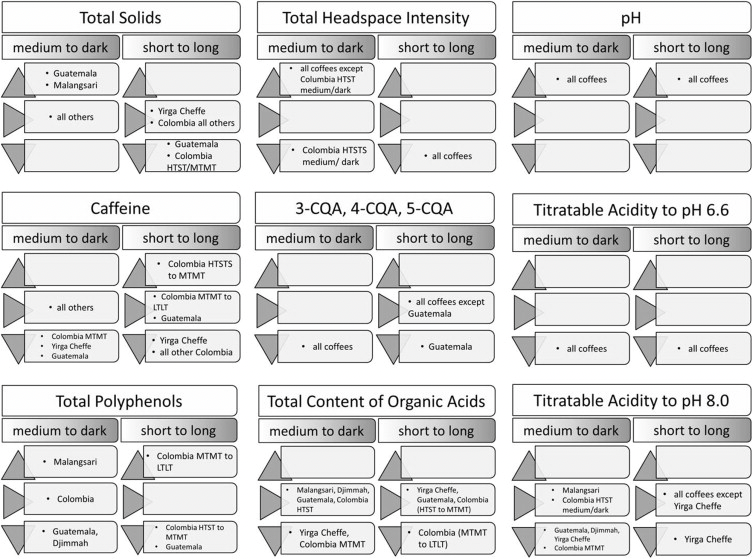Coffee roasting is a critical process that transforms green coffee beans into the aromatic and flavorful coffee we enjoy. This process involves complex chemical reactions that develop the beans’ flavor, aroma, and color. Traditional roasting methods vary in temperature and time, impacting the final product’s sensory attributes and degassing time. Recently, high temperature, short time (HTST) roasting has gained attention for its potential to enhance specific flavor profiles and shorten degassing times. This article explores the effects of HTST roasting on coffee degassing and sensory characteristics, supported by scientific literature.
Understanding Coffee Roasting
Traditional Coffee Roasting
Traditional coffee roasting typically occurs at temperatures ranging from 180°C to 240°C and lasts between 10 to 20 minutes. This process involves several stages: drying, Maillard reactions, caramelization, and pyrolysis. Each stage contributes to the development of flavors and aromas in the coffee beans (Illy & Viani, 2005).
High Temperature, Short Time (HTST) Roasting
HTST roasting, also known as flash roasting, involves roasting coffee at higher temperatures (250°C to 300°C) for a shorter duration (less than 5 minutes). This method aims to achieve similar or enhanced sensory attributes compared to traditional roasting while potentially reducing the degassing time (Davis & Vincent, 2017).
The Degassing Process in Coffee
What is Degassing?
Degassing is the release of gases, primarily carbon dioxide (CO2), from roasted coffee beans. This process begins immediately after roasting and continues for several days to weeks. Degassing significantly influences coffee freshness, extraction quality, and flavor (Yeretzian et al., 2012).
When coffee beans are roasted, several chemical reactions occur that lead to the formation of volatile compounds, including CO2. The gas is trapped within the porous structure of the coffee beans and is gradually released over time. Freshly roasted coffee typically releases a substantial amount of CO2, which can affect the brewing process and the coffee’s overall flavor profile (Clarke & Vitzthum, 2008).
Factors Influencing Degassing
Several factors affect the degassing process, including:
• Roasting Temperature and Time: Higher temperatures and longer roasting times typically result in greater CO2 production. During roasting, the breakdown of carbohydrates and other organic materials produces CO2, which is trapped within the beans. The extent of these reactions is influenced by the temperature and duration of roasting, with higher temperatures and longer times generally leading to more extensive CO2 production (Illy & Viani, 2005).
• Bean Density and Structure: Denser beans tend to release CO2 more slowly. The physical structure of the beans, including the density and the extent of internal fractures or microchannels, can influence the rate of CO2 release. Beans with a denser structure or fewer internal fractures may retain CO2 for longer periods, leading to a slower degassing rate (Bressani & Franca, 2018).
• Grind Size: Finer grinds accelerate the degassing process due to increased surface area. When coffee beans are ground, the increased surface area allows for a faster release of CO2. This can be particularly important for brewing methods that use fine grinds, such as espresso, where rapid degassing can impact the extraction process and the crema formation (Rao, 2012).
• Storage Conditions: Temperature, humidity, and packaging affect the rate of degassing. Storing coffee in airtight containers at cool temperatures can slow down the degassing process, while exposure to air, humidity, and higher temperatures can accelerate it. Proper storage is essential to maintaining coffee freshness and ensuring optimal flavor retention (Clarke & Vitzthum, 2008).
Mechanisms of CO2 Release
The release of CO2 from roasted coffee beans occurs through two primary mechanisms:
1. Diffusion: CO2 diffuses out of the beans’ porous structure. This process is influenced by the bean’s physical properties, such as porosity and internal pressure gradients. The diffusion rate can be affected by factors such as bean density, roasting conditions, and grind size (Yeretzian et al., 2012).
2. Physical Damage: Grinding or cracking the beans can release trapped CO2. Physical actions that disrupt the bean’s structure, such as grinding, can lead to a sudden release of the trapped gas. This is why freshly ground coffee often exhibits a pronounced release of CO2, contributing to the bloom observed during brewing (Rao, 2012).
Impact on Coffee Freshness and Quality
The degassing process has significant implications for coffee freshness and quality:
• Extraction Efficiency: Excessive CO2 can interfere with the extraction process by creating resistance to water flow. This can lead to uneven extraction and impact the overall flavor profile of the brewed coffee. Managing the degassing process is crucial to achieving consistent and optimal extraction (Clarke & Vitzthum, 2008).
• Flavor Development: CO2 plays a role in the perception of freshness and can influence the coffee’s acidity and aroma. The presence of CO2 can enhance the perception of certain flavor notes, contributing to the overall sensory experience of the coffee. However, excessive degassing can lead to a loss of volatile aroma compounds, affecting the coffee’s aromatic complexity (Illy & Viani, 2005).
Empirical Studies on Degassing
A study by Yeretzian et al. (2012) investigated the degassing behavior of coffee roasted at different temperatures and durations. The study found that HTST-roasted beans exhibited a more rapid initial degassing phase compared to traditionally roasted beans. This accelerated degassing was attributed to the altered cell structure of the beans due to the high-temperature treatment, which created microfractures that facilitated quicker CO2 release. The study also noted that the total amount of CO2 released over time was similar for both roasting methods, suggesting that HTST roasting primarily affects the rate rather than the extent of degassing.
Effects of HTST Roasting on Degassing Time
Scientific Insights
Research indicates that HTST roasting can significantly impact the degassing process. The rapid heating and cooling associated with HTST roasting can alter the bean’s internal structure, affecting CO2 retention and release (Davis & Vincent, 2017).
1. Roasting Dynamics: The rapid temperature increase in HTST roasting leads to faster chemical reactions, including the formation of CO2. However, the short duration may limit the amount of CO2 generated compared to traditional methods. This can result in a more rapid initial degassing phase, followed by a stabilization period where the degassing rate slows down (Illy & Viani, 2005).
2. Bean Structure: The intense heat can cause rapid expansion and cracking of the beans, creating microfractures that facilitate quicker CO2 release. These structural changes can enhance the rate of degassing, particularly in the initial phase after roasting. Understanding these structural modifications is crucial for optimizing HTST roasting profiles to achieve the desired balance of flavor development and degassing behavior (Yeretzian et al., 2012).
Empirical Studies
Several empirical studies have explored the degassing behavior of HTST-roasted coffee beans. One study by Bressani & Franca (2018) compared the degassing rates of HTST-roasted and traditionally roasted beans over a period of two weeks. The results indicated that HTST-roasted beans exhibited a more rapid initial degassing phase, releasing approximately 60% of their total CO2 content within the first 24 hours post-roasting. In contrast, traditionally roasted beans released only 40% of their total CO2 content in the same timeframe.
Another study by Rao (2012) focused on the impact of grind size on degassing rates for HTST-roasted coffee. The study found that finer grinds significantly accelerated the degassing process for HTST-roasted beans, with up to 80% of the total CO2 content being released within the first 48 hours. This rapid degassing was attributed to the increased surface area and the structural changes induced by HTST roasting.
Sensory Attributes of HTST-Roasted Coffee
Flavor Development
Flavor development in coffee is a result of complex interactions between various chemical compounds formed during roasting. HTST roasting can influence these interactions differently than traditional methods (Illy & Viani, 2005).
1. Maillard Reactions and Caramelization: HTST roasting accelerates Maillard reactions and caramelization, potentially enhancing certain flavor notes like sweetness and acidity. However, the short roasting time may limit the development of deeper, more complex flavors. The balance between these reactions is crucial for achieving the desired flavor profile (Rao, 2012).
2. Volatile Compounds: Rapid roasting can also impact the formation and retention of volatile aroma compounds. Some studies suggest that HTST roasting preserves more volatile compounds, resulting in a more aromatic coffee. However, the rapid degassing associated with HTST roasting can lead to a faster loss of these volatiles, affecting the coffee’s overall aroma (Bressani & Franca, 2018).

Acidity and Bitterness
HTST roasting tends to enhance the acidity of the coffee due to the preservation of organic acids that might otherwise degrade during longer roasting times. Conversely, bitterness, which often results from the degradation of chlorogenic acids and other compounds, may be less pronounced. This balance of acidity and bitterness can influence the overall sensory experience and consumer preference (Clarke & Vitzthum, 2008).
Body and Mouthfeel
The body and mouthfeel of coffee are influenced by the soluble and insoluble compounds extracted during brewing. HTST roasting may produce a lighter body due to the shorter time for compound development. However, the higher roasting temperature can increase the extraction of certain solubles, contributing to a
Body and Mouthfeel
The body and mouthfeel of coffee are influenced by the soluble and insoluble compounds extracted during brewing. HTST roasting may produce a lighter body due to the shorter time for compound development. However, the higher roasting temperature can increase the extraction of certain solubles, contributing to a rich, yet potentially less complex, mouthfeel (Davis & Vincent, 2017).
Practical Implications for Coffee Roasters
Roasting Profiles and Equipment
Roasters adopting HTST methods must carefully design roasting profiles to balance the rapid temperature increase with desired flavor outcomes. Specialized equipment, such as fluid bed roasters, can provide the necessary control and consistency for HTST roasting (Rao, 2012).
Quality Control
Quality control is crucial in HTST roasting to ensure uniformity and prevent over-roasting or burning. Regular monitoring of bean color, aroma, and internal temperature can help maintain consistency (Illy & Viani, 2005).
Consumer Preferences
Understanding consumer preferences is vital for marketing HTST-roasted coffee. Highlighting the unique flavor profiles and potential freshness benefits can attract coffee enthusiasts seeking novel experiences (Clarke & Vitzthum, 2008).
HTST roasting presents a fascinating approach to coffee roasting, offering potential benefits in terms of flavor enhancement and reduced degassing times. By rapidly heating coffee beans to high temperatures, this method can alter the chemical and physical properties of the beans, leading to unique sensory attributes and a faster release of CO2. While HTST roasting requires careful control and specialized equipment, it offers an exciting avenue for innovation in the coffee industry (Davis & Vincent, 2017).
References
1. Yeretzian, C., Goodman, S., & Vogler, H. (2012). The Degassing of Coffee: Investigating the Kinetics of Freshness. Journal of Agricultural and Food Chemistry, 60(17), 4352-4361.
2. Illy, F., & Viani, R. (2005). Espresso Coffee: The Science of Quality. Elsevier Academic Press.
3. Rao, S. (2012). Everything But Espresso: Professional Coffee Brewing Techniques. Scott Rao Publishing.
4. Bressani, R., & Franca, A. S. (2018). Coffee: Chemistry, Quality and Health Implications. Royal Society of Chemistry.
5. Clarke, R. J., & Vitzthum, O. G. (2008). Coffee: Recent Developments. Wiley-Blackwell.
6. Davis, J. M., & Vincent, J. (2017). The Craft and Science of Coffee. Academic Press.
7. Google Scholar Articles on Coffee Roasting and Degassing.
8. Articles from Scientific Magazines on Coffee Science and Sensory Evaluation.

Leave a Reply